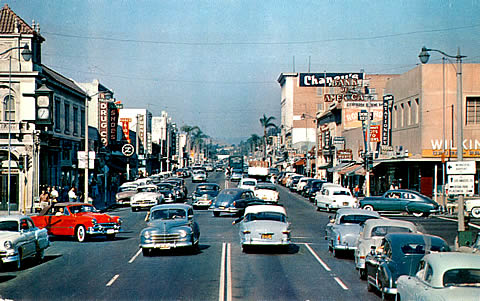
Elsewhere we have noted that the world changed so rapidly during the 19th century that the world of 1900 would have been scarcely imaginable to even far-thinking people in 1800. So much progress had been made so rapidly that it seemed to some that everything that could be discovered or invented was already done. In 1896 the Director of the United States patent office, for example, thought that new patents would soon diminish or even disappear, as everything had already been invented. That of course was before the jet airplane, atomic power, television, the X-ray machine and fluorescent lights, just to name a few undiscovered items.
Once the dust had settled from World War II and the millions of displaced persons had been more or less resettled and the European and Asian cities rebuilt from the piles of rubble created by the war, things began to change more rapidly. Beneath the ominous cloud of fear generated by the Cold War, people looked ahead with both anticipation and doubt. World War II had accelerated the pace of change, obviously in weaponry, but also in transportation, communications, electronics, medicine, and in other ways, both technological and social. But things didn't slow down after the war; they speeded up. In his 1970 book, Future Shock, author Alvin Toffler argued that people were having difficulty keeping up with the rate of change and anticipated further acceleration in the pace of change. He wrote, “Future shock is the dizzying disorientation brought on by the premature arrival of the future.”
From our perspective in the second decade of the 21st century, it is hard to imagine a world without many of the things we take for granted. Thirty five years ago, about the time Ronald Reagan was elected president, no one except a few obscure scientists had ever heard of the Internet. Cell phones were unknown. Offices had desktop computers, but they were huge machines costing tens of thousands of dollars that could only do word processing or other specialized tasks. Only a handful of geeks had what we now call a PC, and it probably had a 10 inch screen which displayed only white or green type on a black background. Now we are contemplating the arrival of self driving cars, packages being delivered by drones, robots he can walk up and down stairs and perform a multitude of household or business tasks, and applications of “artificial intelligence” that are still in their infancy.
With the first decades of alternating complacency and turbulence The American people hoped for much, achieved much and had their faith in their social and political institutions both strengthened and shaken, often at the same time and sometimes by the same events. Welcome to the postwar world. For several decades, however, people lived their lives with constant if gentle reminders of those war years—the way things had been before the war, what the war changed, and how the future would always be viewed with reference to the monumental events of both the Great Depression and the Second World War.
This section plays out how the American people dealt with all that that had happened and what was still yet to come.
Topics
- Legacy of World War II
- The Truman-Eisenhower-Kennedy Years
- The Modern Civil Rights Movement
- The Johnson-Nixon Years
- The Sixties Revolution
- Watergate
- The Ford_through_Clinton Years
- Documents


Street Scene 1950s
| Sage History Home | Reconstruction | Gilded Age | Progressive | World Power |
| Resources Home | Twenties/New Deal | World War 2 | Cold War | Post-WW2 Domestic |